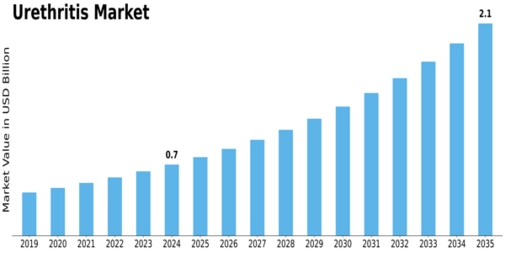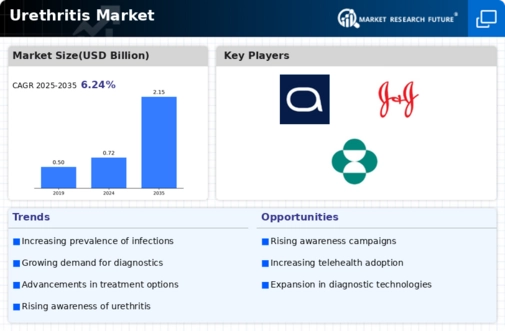Urethritis Size
Urethritis Market Growth Projections and Opportunities
Sexual health changes have a big effect on the urethritis market, since urethritis is often linked to sexually transmitted diseases (STIs). How common urethritis is and how the market works are both affected by changes in sexual behavior, habits, and knowledge of STIs. The market is strongly influenced by STDs, particularly urethritis. various STI rates in various demographics and places affect urethritis medication need. Genetic diagnostics and rapid point-of-care methods modify urethritis diagnosis. Better diagnostics detect the illness early, affecting therapy and market movement. New urethritis microorganisms are antibiotic-resistant, making therapy difficult. Antibiotic resistance trends influence the urethritis market in terms of pharmaceuticals, treatment, and drug development. Government efforts that promote sexual health, safe practices, and STI understanding impact the urethritis market. Public health campaigns may reduce urethritis by encouraging prevention and early detection. Urethritis is tougher to identify and treat due to varied health care systems. Well-established healthcare systems may increase diagnosis and connected medical treatment demands. Urethritis and other STIs may be prevented by teaching sexual health and safety in school. Sexual education increases knowledge, which encourages responsible conduct and reduces infections, changing market dynamics. Research & development in the pharmaceutical sector affects the urethritis market. New medications, antivirals, and combination pharmaceuticals increase therapy options and transform the market. Telemedicine and internet chats have altered urethritis treatment. The increase of video meetings influences market trends by improving patient access to medical care. Urethritis prevalence depends on age, gender, and sexual orientation. Because infection rates vary by category, the urethritis market is heterogeneous. The urethritis market is affected by how people feel about sexual health, the shame that comes with STIs, and social norms. Patients' actions can be affected by how society sees them, which can change the number of diagnoses and the desire for care. How easy it is for patients to get medical help for urethritis depends on how much their health insurance covers. Insurance policies and payment systems change the way the market works by changing how much treatment costs and how often it is used.







Leave a Comment